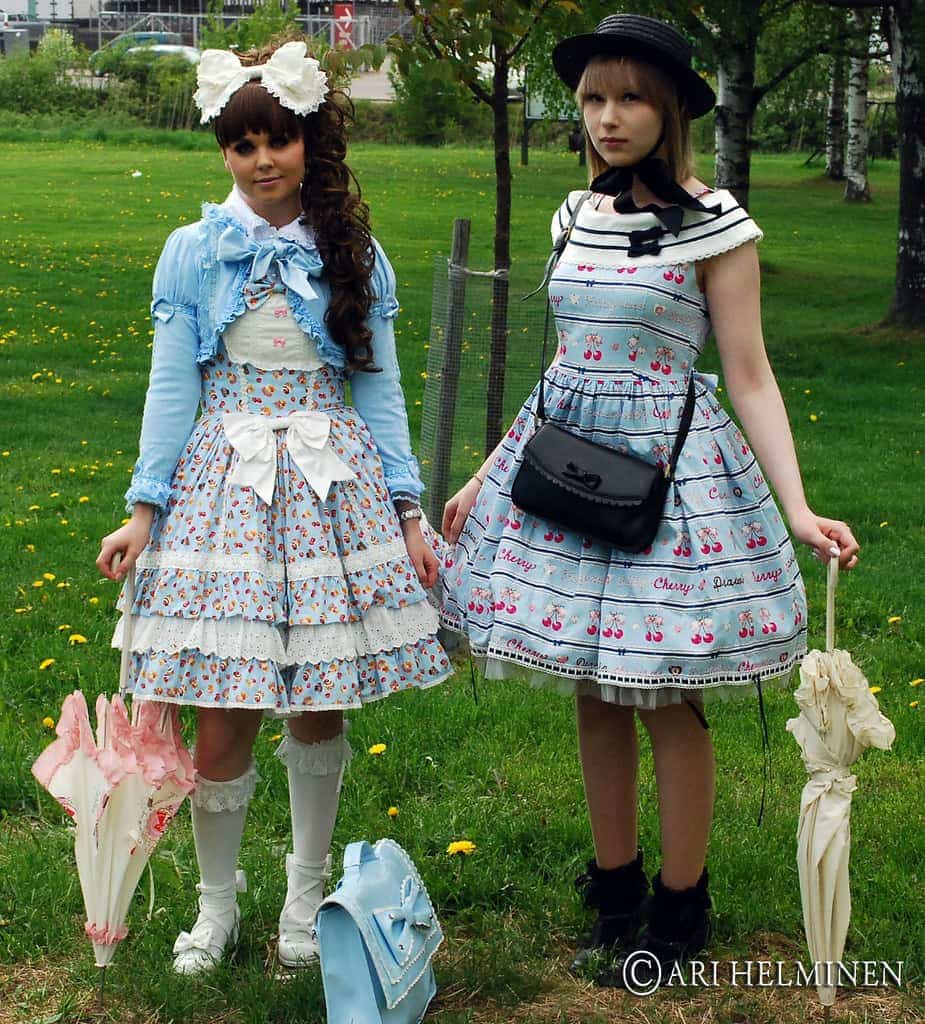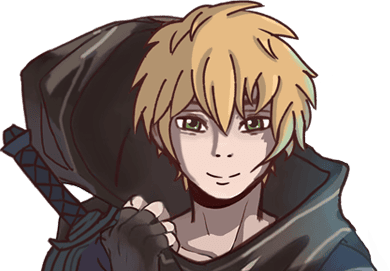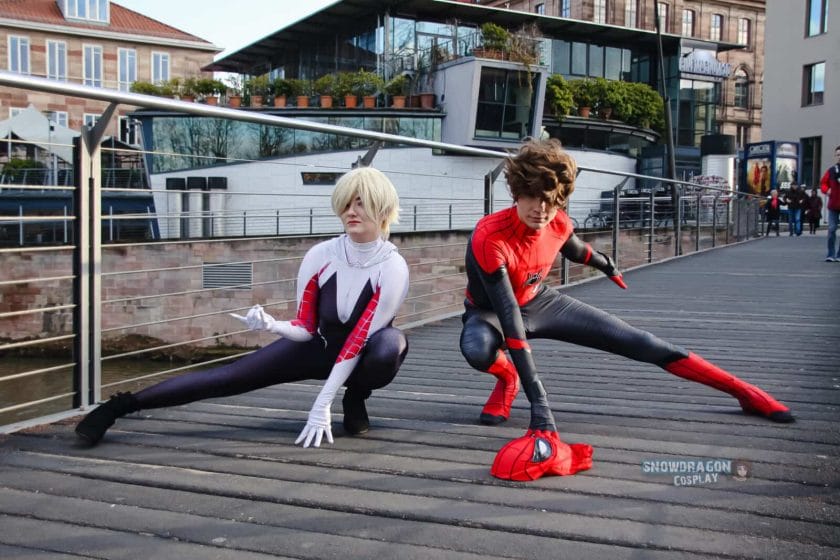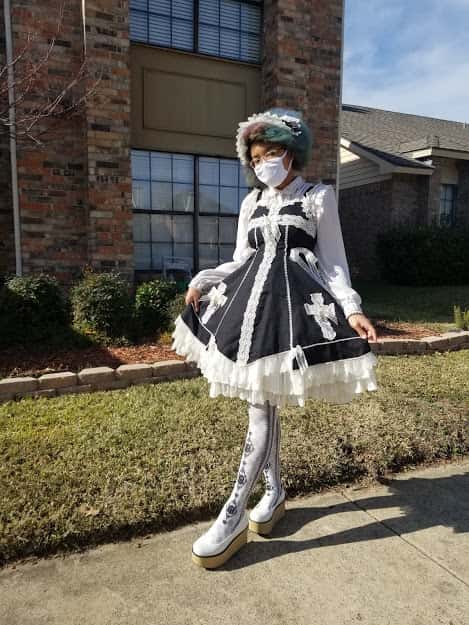[publishpress_authors_box layout="ppma_boxes_840322"]

1. The History and Origin of Lolita Fashion
Lolita fashion originated in Japan in the 1980s and was heavily influenced by Victorian-era clothing and Rococo-style fashion. It was initially inspired by the clothing worn in the novel “Lolita” by Vladimir Nabokov, but has since evolved into a unique style of its own. The term “Lolita” does not refer to the provocative nature of the novel, but rather to the innocence and doll-like aesthetic that is characteristic of the fashion.
In its early days, Lolita fashion was primarily worn by teenagers as a form of rebellion against mainstream fashion trends. It allowed individuals to express their creativity and individuality through elaborate outfits that featured frilly dresses, petticoats, lace, bows, and other intricate details. Over time, Lolita fashion gained popularity both within Japan and internationally, with dedicated communities and brands emerging to cater to enthusiasts.
The Birth of Nekodanshi
As a cosplayer agency brand from Nrnberg, we at Nekodanshi have always been fascinated by different subcultures and fashion trends. When we first discovered Lolita fashion, we were immediately drawn to its whimsical and romantic aesthetic. We saw it as an opportunity to create unique cosplay outfits that combined elements of Lolita fashion with our love for anime characters.
With our sewing machines humming and our creative juices flowing, we started experimenting with different fabrics, patterns, and accessories to bring our vision to life. Our first Lolita-inspired cosplay outfit was a fusion between a classic Lolita dress and the iconic Sailor Moon uniform a match made in otaku heaven! We wore it proudly at conventions and events, garnering attention from fellow cosplayers who were intrigued by this new blend of styles.
Spreading the Lolita Love
Word of our unique cosplay outfits spread like wildfire, and soon we were receiving requests from other cosplayers who wanted their own custom Lolita-inspired creations. We happily obliged, diving headfirst into the world of Lolita fashion and immersing ourselves in its history and culture.
We quickly realized that there was a whole community of Lolita fashion enthusiasts who were passionate about this style and eager to connect with others who shared their love for frills and lace. We attended Lolita meet-ups, joined online forums, and even started hosting our own events to bring together fellow Lolitas and cosplayers.
- Attending Lolita meet-ups
- Joining online forums
- Hosting our own events
The Evolution of Nekodanshi’s Style
As we delved deeper into the world of Lolita fashion, our style evolved alongside it. We experimented with different substyles such as sweet Lolita, gothic Lolita, and even punk Lolita. Each substyle allowed us to express different facets of our personalities while still staying true to the core principles of Lolita fashion.
Today, Nekodanshi is known for its eclectic mix of cosplay-inspired Lolita outfits that blend elements from various fandoms with traditional Lolita aesthetics. Our designs often feature intricate hand-sewn details, custom-made accessories, and a touch of whimsy that sets them apart from traditional Lolita fashion.
- Sweet Lolita
- Gothic Lolita
- Punk Lolita
2. How Lolita Fashion Gained Popularity Outside of Japan
2.1 The Emergence of Online Communities
One factor that contributed to the popularity of Lolita fashion outside of Japan was the emergence of online communities dedicated to the style. In the early 2000s, platforms such as LiveJournal and MySpace provided spaces for Lolita enthusiasts to connect, share outfit photos, and discuss fashion tips. These online communities allowed individuals from different parts of the world to come together and bond over their love for Lolita fashion, ultimately helping to spread awareness and interest in the style.
2.2 Influence from Japanese Media and Pop Culture
Another reason for the rise in popularity of Lolita fashion outside of Japan is its portrayal in Japanese media and pop culture. Anime series like “Rozen Maiden” and “Sailor Moon” featured characters wearing Lolita-inspired outfits, which caught the attention of viewers worldwide. Additionally, Japanese street fashion magazines like “KERA” showcased stunning editorial spreads featuring various substyles within Lolita fashion. As a result, people became intrigued by this unique and whimsical aesthetic, leading to its increased popularity beyond Japan’s borders.
2.3 Global Lolita Fashion Events
The organization of global Lolita fashion events also played a significant role in popularizing the style outside of Japan. Events such as “Anime Expo” in Los Angeles and “Hyper Japan” in London started including dedicated Lolita fashion shows, panels, and meet-ups where enthusiasts could gather and showcase their outfits. These events not only provided a platform for individuals to express their love for Lolita fashion but also served as an opportunity for newcomers to learn more about the style from experienced community members.
3. Notable Designers in the Lolita Fashion Industry
3.1 Mana – Moi-mme-Moiti
One of the most influential designers in the Lolita fashion industry is Mana, the founder of the brand Moi-mme-Moiti. Known for his elegant and dark aesthetic, Mana’s designs often incorporate intricate lace, velvet fabrics, and Victorian-inspired elements. His contributions to Lolita fashion have helped shape the Gothic Lolita substyle and have inspired many other designers within the community.
3.2 Misako Aoki – BABY, THE STARS SHINE BRIGHT
Misako Aoki is a notable figure in Lolita fashion as she not only designs for BABY, THE STARS SHINE BRIGHT but also served as a Kawaii Ambassador appointed by the Japanese government. Her designs are characterized by their playful and whimsical nature, often featuring pastel colors, cute motifs like bows and ribbons, and an overall youthful charm.
3.3 Junya Suzuki – Alice and the Pirates
Junya Suzuki is a prominent designer behind the brand Alice and the Pirates, which specializes in creating elegant and refined outfits with a focus on Pirate Lolita aesthetics. His designs often incorporate nautical themes, rich fabrics like velvet and brocade, and intricate details such as ruffles and lace trims.
Notable Collaborations:
- Angelic Pretty x Sanrio: This collaboration brought together two beloved brands to create a collection featuring iconic Sanrio characters like Hello Kitty and My Melody in Lolita-inspired designs.
- Elegant Poupe x Innocent World: This collaboration between popular Lolita blogger Fanny Rosy (Elegant Poupe) and Innocent World resulted in a collection that showcased Fanny’s unique style and Innocent World’s classic Lolita designs.
Emerging Designers:
- Lief
- Dollbe
- Atelier Pierrot
4. Exploring the Different Substyles within Lolita Fashion
4.1 Sweet Lolita
Sweet Lolita is one of the most well-known substyles within Lolita fashion, characterized by its emphasis on pastel colors, cute motifs like bows and ribbons, and an overall youthful and innocent aesthetic. Dresses in this substyle often feature lace trims, ruffles, and delicate details such as embroidery or appliques.
4.2 Gothic Lolita
Gothic Lolita is a substyle that draws inspiration from Victorian mourning fashion and gothic aesthetics. It typically features darker color palettes such as black, deep reds, and purples. Dresses in this substyle often incorporate lace, corsets, crosses, and other elements associated with gothic imagery.
4.3 Classic Lolita
Classic Lolita takes inspiration from more mature and refined styles of clothing from different historical periods. It often features muted color palettes like ivory, navy blue, or burgundy. Dresses in this substyle tend to have simpler silhouettes with elegant details such as pintucks or subtle lace trims.
4.4 Punk Lolita
Punk Lolita combines elements of punk fashion with the traditional Lolita silhouette. It incorporates edgier elements such as tartan prints, safety pins, studs, and chains while still maintaining the key characteristics of Lolita fashion, such as the bell-shaped skirts and frilly blouses.
Other Substyles:
- Country Lolita
- Ouji / Boystyle Lolita
- Sailor Lolita
- Guro Lolita
5. The Evolution of Lolita Fashion Over Time
5.1 Origins in the Rococo and Victorian Eras
The roots of Lolita fashion can be traced back to the Rococo and Victorian eras, where women’s clothing featured voluminous skirts, corsets, and intricate details. These historical influences laid the foundation for the silhouette and elegance that would later become synonymous with Lolita fashion.
5.2 The Birth of Modern Lolita Fashion in Japan
In the late 1970s and early 1980s, Japanese designers like Rei Kawakubo and Yohji Yamamoto challenged traditional ideas of fashion by introducing avant-garde designs that embraced unconventional silhouettes. This rebellion against mainstream fashion eventually paved the way for the birth of modern Lolita fashion in Japan.
5.3 Mainstream Popularity in Japan during the ’90s
In the 1990s, Lolita fashion gained mainstream popularity in Japan due to its appearance in popular magazines like “Gothic & Lolita Bible” and its adoption by J-pop idols. This era saw an explosion of different substyles within Lolita fashion as designers and enthusiasts experimented with various themes, colors, and aesthetics.
5.4 International Recognition and Global Influence
In recent years, there has been a growing international recognition and appreciation for Lolita fashion. The style has gained a dedicated following in countries such as the United States, the United Kingdom, and Australia, with numerous Lolita fashion events and communities flourishing worldwide. This global influence has led to further diversification and innovation within the Lolita fashion community.
6. Key Elements and Characteristics of Lolita Fashion
6.1 Puffy Petticoats for Bell-Shaped Silhouettes
A key element of Lolita fashion is the bell-shaped silhouette achieved through the use of puffy petticoats or hoop skirts. These undergarments are worn underneath dresses or skirts to add volume and create a dramatic shape that is characteristic of Lolita fashion.
6.2 Blouses with Ruffled Collars
Lolita blouses often feature ruffled collars, which add a touch of femininity and elegance to the overall look. These collars can be high-necked or Peter Pan-style, depending on the desired substyle.
6.3 Lace Trims and Details
Lace trims are a common feature in Lolita fashion, adding a delicate and intricate touch to dresses, blouses, and accessories. Lace can be found on cuffs, hems, collars, or as decorative accents throughout an outfit.
6.4 Use of Ribbons and Bows
Ribbons and bows are iconic elements in Lolita fashion that are often used as embellishments on dresses, blouses, shoes, headwear, or even as accessories themselves. They add a whimsical and playful touch to the overall aesthetic.
Other Key Elements:
- Knee-high Socks or Tights
- Mary Jane Shoes or Heeled Boots
- Parasols and Umbrellas
- Wristcuffs and Gloves
- Headbands, Bonnets, or Hats
7. Common Accessories and Footwear in Lolita Fashion
7.1 Headwear – Bows, Bonnets, and Headdresses
Lolita fashion often incorporates various headwear options to complete the look. Bows can be worn as hair accessories or attached to headbands. Bonnets with lace trims and ribbons are popular choices for Classic Lolita outfits. Headdresses adorned with flowers, feathers, or bows add an extra touch of elegance.
7.2 Bags – Purses and Parasol Bags
Purses are essential accessories in Lolita fashion, often featuring lace trims, bows, or unique shapes like teacups or cakes. Parasol bags are another popular option that mimics the shape of a parasol but is designed to function as a handbag.
7.3 Footwear – Mary Janes and Tea Party Shoes
Mary Jane shoes are a classic choice for Lolita fashion due to their feminine and timeless appeal. They often feature straps across the instep with buckle closures. Tea party shoes have a similar silhouette but typically have lower heels or no heels at all for added comfort.
Other Accessories:
- Lace Parasols and Umbrellas
- Gloves and Wristcuffs
- Socks – Knee-highs, Over-the-knees, Tights
- Jewelry – Rings, Necklaces, Brooches
- Scarves and Capelets
8. Creating a Complete Lolita Look: Hair and Makeup Tips
8.1 Hairstyles – Curls, Buns, and Braids
Lolita hairstyles often feature soft curls, buns, or braids to complement the overall feminine and elegant aesthetic. Curls can be achieved using hot rollers or curling irons, while buns and braids can be styled with the help of hair accessories like bows or ribbons.
8.2 Natural-Looking Makeup with Emphasis on Eyes
Lolita makeup typically focuses on creating a youthful and doll-like appearance. A natural-looking base with light coverage is preferred, followed by rosy cheeks for a healthy flush. The eyes are emphasized with soft eyeshadow colors like pastels or neutrals, subtle eyeliner, and mascara. Lips are usually kept in soft shades of pink or red.
Tips for Hair Accessories:
- Bows – Attach them to hair clips or headbands for easy placement.
- Hair Combs – Use decorative combs adorned with flowers or bows to secure updos.
- Hair Extensions – Add length or volume to your hair with clip-in extensions in matching or contrasting colors.
Tips for Makeup:
- False Lashes – Enhance the doll-like effect by adding false lashes that emphasize the eyes.
- Pastel Eyeshadows – Experiment with soft pastel shades like lavender, mint green, or baby blue for a dreamy look.
- Glossy Lips – Apply a clear lip gloss over your chosen lip color to achieve a dewy and youthful effect.
9. Rules and Guidelines for Wearing Lolita Fashion
9.1 Dress Appropriately for the Occasion
When wearing Lolita fashion, it’s important to consider the appropriateness of the outfit for the occasion. While Lolita fashion can be worn casually, more elaborate or attention-grabbing outfits are better suited for events or meet-ups specifically dedicated to Lolita fashion.
9.2 Respect Personal Space and Boundaries
Lolita fashion is often associated with modesty and femininity, so it’s essential to respect personal space and boundaries when interacting with others. This includes refraining from touching someone’s outfit without permission and being mindful of personal comfort levels during photoshoots or social gatherings.
9.3 Embrace Individuality within the Style
Lolita fashion allows for creativity and personal expression within its established guidelines. While there are certain key elements that define Lolita fashion, individuals are encouraged to incorporate their own unique style preferences into their outfits, whether it’s through color choices, accessories, or combining different substyles.
Additional Guidelines:
- Avoid Cultural Appropriation – Be respectful when incorporating elements from other cultures into your outfit.
- Maintain Good Hygiene – Keep your clothing clean and
10. Incorporating Personal Style into the Lolita Aesthetic
Exploring Different Substyles
Incorporating personal style into the Lolita aesthetic allows individuals to express their unique tastes and preferences within this fashion subculture. One way to achieve this is by exploring different substyles of Lolita fashion. There are various substyles such as sweet Lolita, gothic Lolita, classic Lolita, and many more. Each substyle has its own distinct characteristics, allowing individuals to choose the one that resonates with their personal style the most. By experimenting with different substyles, Lolitas can mix and match elements to create a look that reflects their individuality.
Personalizing Accessories
Another way to incorporate personal style into the Lolita aesthetic is through accessories. Accessories play a crucial role in completing a Lolita outfit and can be customized to reflect one’s personality. For example, adding unique brooches, hair accessories, or even handcrafted items can elevate an outfit and make it truly one-of-a-kind. Personalizing accessories also allows for creativity and self-expression within the boundaries of the Lolita fashion guidelines.
Mixing Modern and Traditional Elements
Lolitas can also incorporate their personal style by mixing modern and traditional elements in their outfits. While traditional Lolita fashion draws inspiration from Victorian and Rococo eras, adding contemporary touches can give outfits a fresh and personalized twist. This could involve incorporating trendy patterns or colors into a traditional silhouette or accessorizing with modern jewelry pieces. By blending old and new elements, individuals can create a unique fusion that represents their personal style while still adhering to the overall aesthetics of Lolita fashion.
11. Events and Conventions for Lolita Fashion Enthusiasts
Lolita Fashion Meetups
One of the highlights for Lolita fashion enthusiasts are the various events and conventions that bring together like-minded individuals. Lolita fashion meetups provide a platform for individuals to showcase their outfits, exchange styling tips, and connect with others who share their passion for this unique style. These meetups often include activities such as tea parties, photo shoots, and even fashion shows.
International Lolita Conventions
In addition to local meetups, there are also international Lolita conventions that attract enthusiasts from around the world. These conventions offer a larger-scale gathering where attendees can participate in workshops, panel discussions, and shop from a wide range of vendors selling Lolita clothing and accessories. Some notable international Lolita conventions include Anime Expo in Los Angeles, Japan Expo in Paris, and Hyper Japan in London.
Themed Events
Themed events are another exciting aspect of the Lolita fashion community. These events revolve around specific themes such as Halloween, Christmas, or even historical eras. Attendees dress up accordingly to match the theme and enjoy immersive experiences like themed tea parties or costume contests. Themed events add an extra layer of fun and creativity to the already vibrant world of Lolita fashion.
12. Debunking Misconceptions and Stereotypes about Lolita Fashion
Lolita Fashion as Empowering
Contrary to common misconceptions, Lolita fashion is not about infantilization or promoting inappropriate behavior. Instead, it is a form of self-expression that allows individuals to embrace femininity on their own terms. Many Lolitas find empowerment through this fashion subculture by embracing their individuality and challenging societal norms surrounding beauty standards.
The Role of Consent in Lolita Fashion
Another misconception surrounding Lolita fashion is the assumption that it involves non-consensual interactions or promotes fetishism. In reality, consent plays a crucial role in the Lolita community. Lolitas prioritize personal boundaries and respect each other’s consent when it comes to physical interactions or photography. The focus is on creating a safe and inclusive environment where everyone can enjoy the fashion without feeling objectified or uncomfortable.
Breaking Stereotypes through Education
To debunk these misconceptions and stereotypes, education plays a vital role. Many Lolita enthusiasts actively engage in educating others about the true nature of this fashion subculture through blog posts, social media content, and even panel discussions at conventions. By sharing their experiences and knowledge, they aim to dispel misunderstandings and foster a better understanding of Lolita fashion as an art form rather than something to be misunderstood or judged.
13. The Influence of Social Media on the Perception and Spread of Lolita Fashion Trends
Instagram’s Role in Showcasing Outfits
Social media platforms like Instagram have played a significant role in shaping the perception and spread of Lolita fashion trends. Many Lolitas use Instagram as a platform to showcase their outfits, share styling tips, and connect with fellow enthusiasts from around the world. Through hashtags such as #LolitaFashion or #LolitaStyle, individuals can discover new trends, gain inspiration, and build a supportive community.
YouTubers as Influencers
YouTube has also become a popular platform for Lolitas to share their experiences, tutorials, and hauls related to this fashion subculture. Many YouTubers have gained substantial followings by providing valuable content that ranges from outfit coordination advice to discussions about different aspects of Lolita fashion. These influencers not only contribute to spreading awareness but also help newcomers navigate the intricacies of this unique style.
The Rise of Online Communities
The internet has facilitated the formation of various online communities dedicated to Lolita fashion. Platforms such as Facebook groups, Reddit threads, and dedicated forums allow enthusiasts to connect, seek advice, and share their passion for the fashion. These online communities have played a vital role in spreading trends, organizing events, and fostering a sense of belonging among Lolitas worldwide.
14. Men’s Participation in the Lolita Fashion Community
Exploring Boystyle Lolita
While Lolita fashion is often associated with feminine aesthetics, there is also a growing presence of men within the community. Men who are interested in participating in the Lolita fashion community often explore a substyle known as “boystyle” or “ouji.” Boystyle Lolita incorporates elements of traditional Lolita fashion while adapting them to suit masculine aesthetics. This allows male enthusiasts to express their creativity and personal style within the framework of this unique fashion subculture.
Supportive Communities for Male Enthusiasts
The Lolita fashion community has been increasingly inclusive and supportive of men who wish to participate. Online communities dedicated to boystyle Lolita provide spaces for male enthusiasts to share outfit inspiration, discuss styling tips, and connect with others who share similar interests. This support has helped break down gender stereotypes surrounding fashion and fostered an environment where individuals can freely express themselves.
Breaking Gender Norms through Representation
By actively participating in the Lolita fashion community, men challenge societal gender norms associated with clothing choices. Their involvement helps promote inclusivity and diversity within the subculture by showcasing that anyone can enjoy and excel at creating stunning outfits within the boundaries of this unique style. Through representation and visibility, men’s participation encourages others to embrace their own personal style regardless of societal expectations or gender norms.
In conclusion, Lolita fashion is a unique and captivating style that allows individuals to express their creativity and embrace their love for all things cute and elegant. Whether you’re a long-time enthusiast or just discovering this enchanting fashion trend, exploring the world of Lolita can be a delightful journey. If you’re interested in fully immersing yourself in the world of cosplay and experiencing the magic firsthand, we invite you to check out our cosplay services. We’d love to help bring your favorite characters to life!






